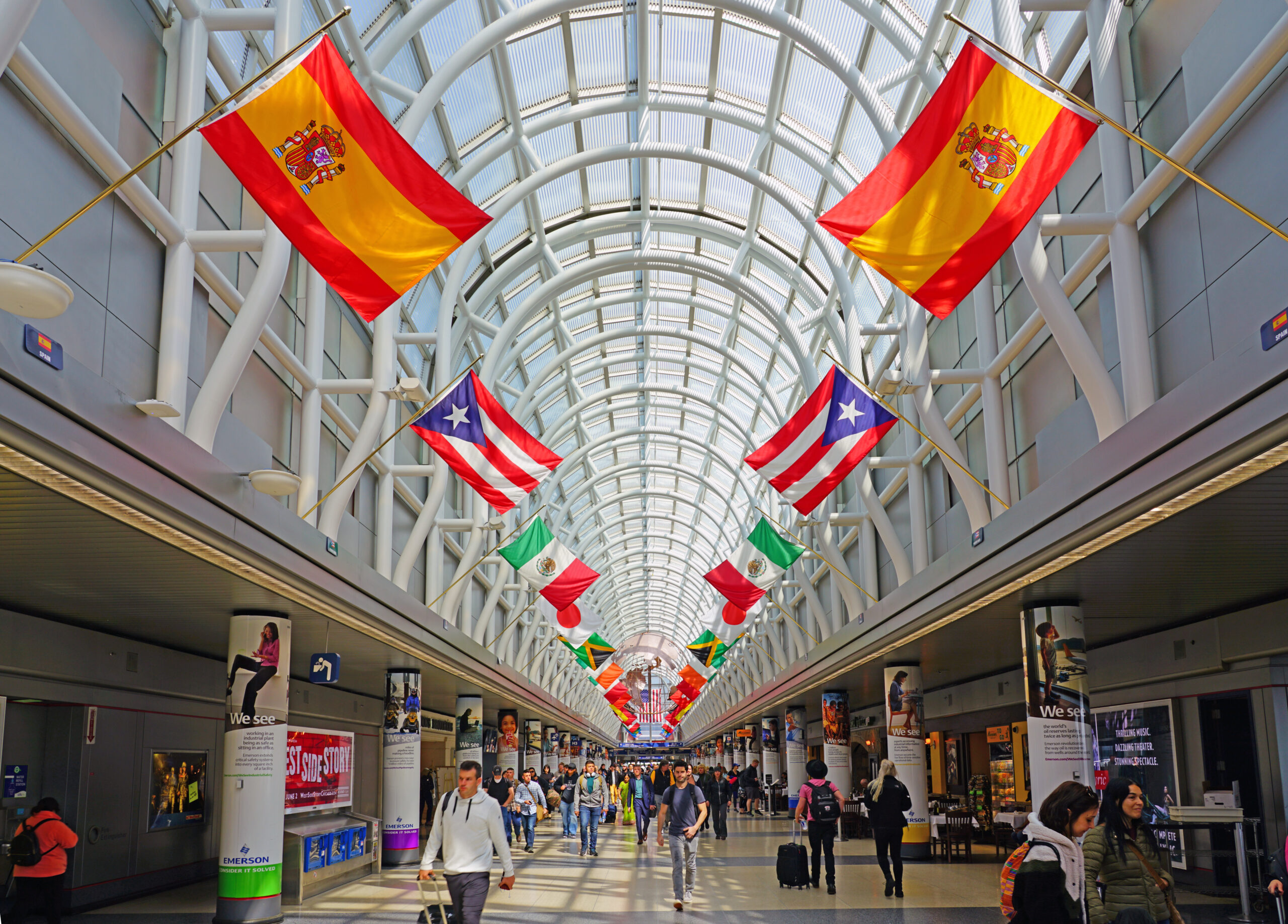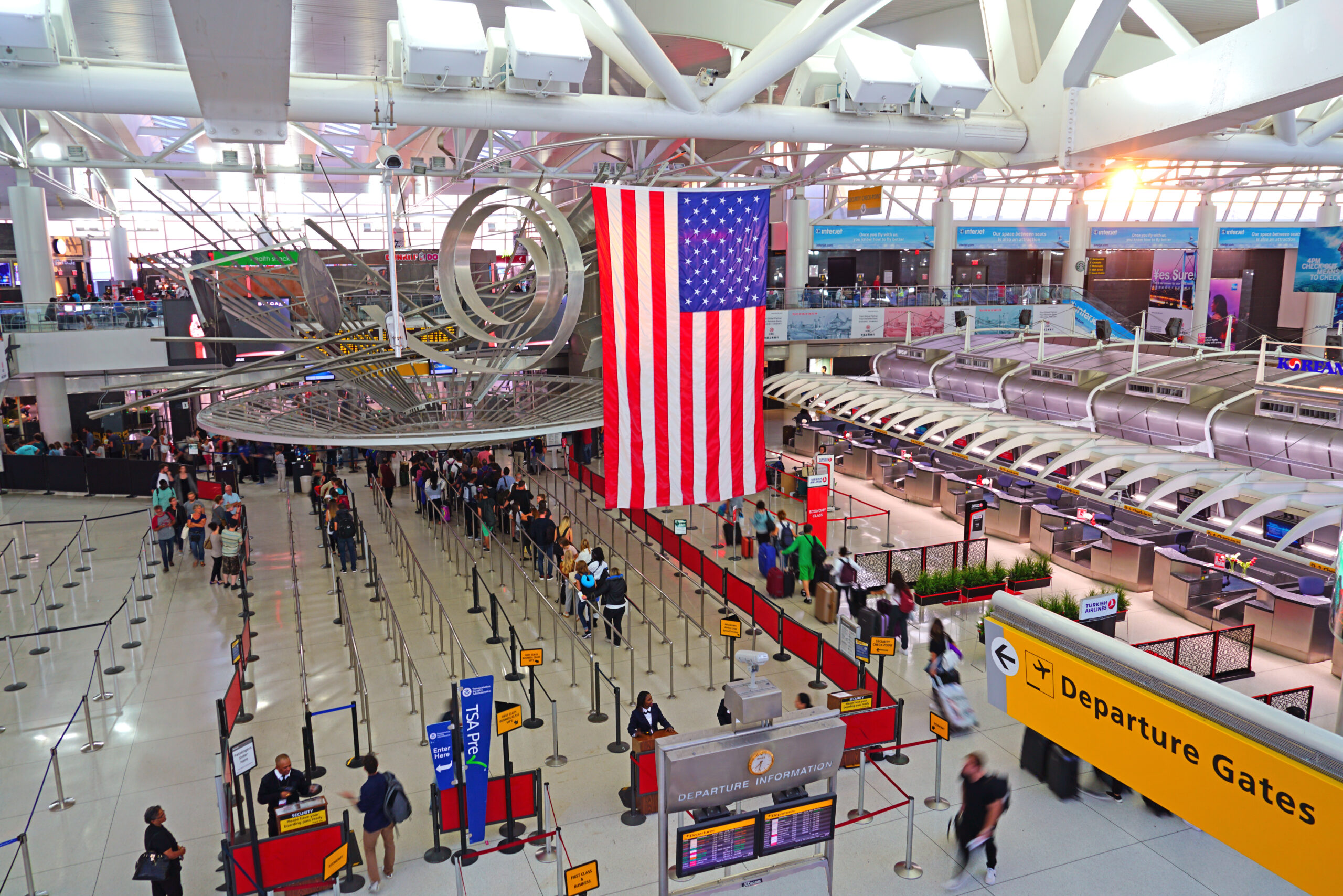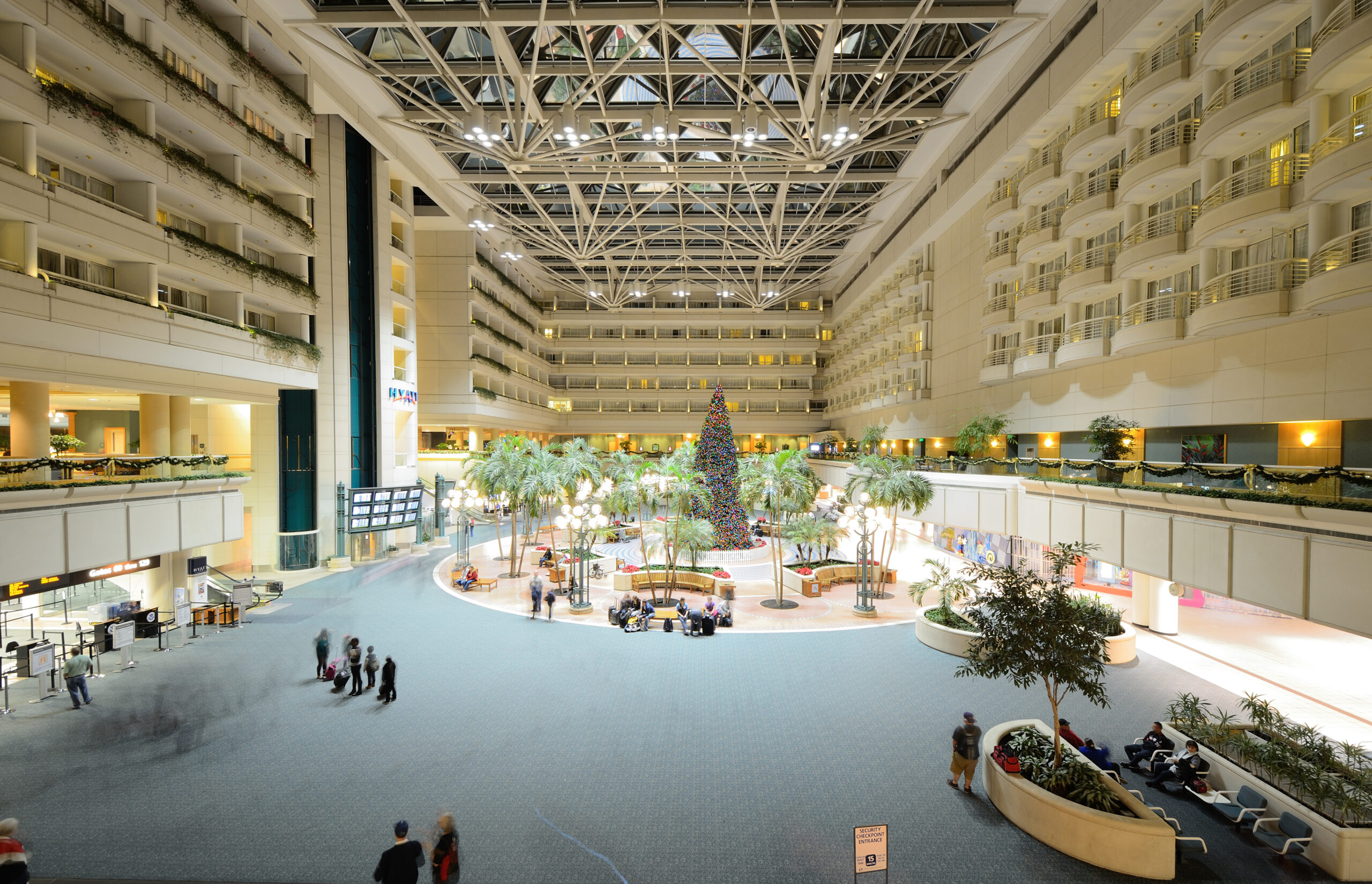The United States hosts some of the busiest airports in the world, connecting millions of passengers to countless destinations each year. These airports aren’t just transportation hubs—they’re gateways to commerce, tourism, and international connections. Each one has a unique history, impressive passenger traffic, and a role in shaping the aviation landscape. Here’s a closer look at the busiest airports in the country.
Hartsfield–Jackson Atlanta International Airport (ATL)

Hartsfield–Jackson Atlanta International Airport opened in 1925 and has been a vital hub in American aviation. Located in Atlanta, Georgia, it consistently ranks as one of the busiest airports globally, serving over 75 million passengers annually. Known for its two terminals, ATL is a primary hub for Delta Airlines, boosting its passenger count with both domestic and international flights. The airport’s layout and efficiency make it a favorite among travelers for quick connections. Atlanta’s airport combines modern amenities with efficient design, helping it manage its colossal passenger load smoothly year after year.
Dallas/Fort Worth International Airport (DFW)

Dallas/Fort Worth International Airport opened in 1974 and serves as a major hub for American Airlines. Located between Dallas and Fort Worth, Texas, it ranks among the largest U.S. airports, with over 62 million passengers annually. DFW’s layout features five terminals and a convenient Skylink train system, connecting travelers to over 200 destinations. Known for its accessible design, Dallas/Fort Worth International also ranks highly in passenger satisfaction. It plays a significant role in connecting central U.S. to international and domestic locations, making it a key player in American travel.
Denver International Airport (DEN)

Denver International Airport, opened in 1995, stands out for its iconic tent-like design and vast size, covering over 33,000 acres. Located in Denver, Colorado, it serves around 61 million passengers each year. As a central hub for United Airlines and Frontier Airlines, DEN connects travelers to multiple U.S. and international destinations. The airport’s expansive runways allow it to handle significant traffic and are built to manage harsh winter conditions. Its design and spacious terminals offer passengers a comfortable and efficient travel experience, reflecting Denver’s growing role in U.S. aviation.
Los Angeles International Airport (LAX)

Los Angeles International Airport has been operating since 1930 and serves as a gateway for international and domestic flights. LAX handles over 88 million passengers annually, with a layout of nine terminals designed to accommodate heavy traffic. As the primary airport for Hollywood and international celebrities, it has a unique charm and significant influence. Major airlines such as Delta, United, and American Airlines use LAX as a hub for transcontinental and global flights. The airport’s ongoing upgrades aim to enhance passenger experience and maintain its iconic status in the aviation world.
O’Hare International Airport (ORD)

Opened in 1955, O’Hare International Airport in Chicago, Illinois, has long been a central hub in U.S. aviation. O’Hare serves over 54 million passengers yearly, with a well-planned terminal system to handle both international and domestic flights. United Airlines and American Airlines use ORD as a hub, increasing its passenger volume significantly. The airport is known for its impressive infrastructure, frequent updates, and extensive flight network. Its central U.S. location makes it a popular stopover point for international flights, giving it a substantial role in connecting America’s coasts and the world.
John F. Kennedy International Airport (JFK)

John F. Kennedy International Airport, opened in 1948, is New York’s busiest airport and serves over 62 million passengers annually. JFK’s eight terminals cater to diverse international destinations and many transcontinental flights. Delta and American Airlines use JFK as a hub, enhancing its reach across the globe. Known for its iconic history and importance to New York City, JFK remains an essential portal for travel to and from the East Coast. The airport continues to undergo modernization projects, making it a more traveler-friendly and efficient space.
San Francisco International Airport (SFO)

San Francisco International Airport, which began operating in 1927, connects millions of travelers from the Bay Area to destinations around the world. SFO serves over 57 million passengers annually and is known for its eco-friendly design and commitment to sustainability. The airport’s four terminals cater to both domestic and international flights, with United Airlines using it as a hub. Located near Silicon Valley, SFO plays a crucial role in connecting tech professionals and tourists alike. It consistently receives high marks for its amenities and ease of use, making it a preferred West Coast hub.
Seattle–Tacoma International Airport (SEA)

Seattle–Tacoma International Airport, or Sea-Tac, opened in 1944 and is a major hub for Alaska Airlines. Located in Seattle, Washington, SEA serves over 50 million passengers annually, offering flights across North America, Asia, and Europe. Its design and layout are known for efficiency, with frequent updates that enhance the travel experience. Sea-Tac’s location as a northern U.S. port makes it vital for Pacific connections, especially to Asia. Its facilities and service quality have helped it grow as one of the most prominent airports on the West Coast.
Orlando International Airport (MCO)

Orlando International Airport, commonly known as MCO, opened in 1981 and has become a premier travel hub for both domestic and international passengers. Located in Orlando, Florida, it serves over 50 million passengers annually. MCO is especially popular due to its proximity to major tourist attractions, including Walt Disney World and Universal Studios. With four terminals, the airport efficiently manages its heavy traffic while offering amenities like expansive shopping and dining areas. Orlando International also prioritizes sustainability, frequently upgrading its facilities to enhance passenger experience and environmental responsibility.
Miami International Airport (MIA)

Miami International Airport opened its doors in 1928 and has grown to be one of the busiest airports for international travel in the U.S. Serving around 45 million passengers annually, MIA acts as a primary gateway to Latin America and the Caribbean. Located in Miami, Florida, it hosts major airlines like American Airlines, which uses it as a hub. With a wide range of shopping and dining options, the airport provides comfort and convenience to passengers. Miami International’s strategic location and vast network make it essential for connecting flights to southern destinations and beyond.
Phoenix Sky Harbor International Airport (PHX)

Phoenix Sky Harbor International Airport, opened in 1928, serves as Arizona’s largest airport, handling around 44 million passengers annually. Located in Phoenix, PHX is a hub for American Airlines and Southwest Airlines, offering extensive domestic flights and select international routes. The airport’s three terminals are well-known for their efficiency and ease of navigation, with numerous amenities for travelers. Sky Harbor’s strategic location in the Southwest makes it a critical link for passengers traveling across the United States. Its commitment to convenience and accessibility enhances its appeal as a popular travel destination.
Houston George Bush Intercontinental Airport (IAH)

George Bush Intercontinental Airport opened in 1969 and ranks as one of the busiest airports in Texas. Located in Houston, it serves approximately 43 million passengers each year. As a hub for United Airlines, IAH provides a wide range of domestic and international routes. The airport’s five terminals offer state-of-the-art facilities, including numerous shopping and dining options. Positioned near Houston’s downtown, George Bush Intercontinental plays a significant role in both business and leisure travel. The airport’s continual improvements help maintain its high passenger volume and quality of service.
Minneapolis–Saint Paul International Airport (MSP)

Minneapolis–Saint Paul International Airport, opened in 1920, serves as the main airport for Minnesota and is a major hub for Delta Airlines. With over 39 million passengers each year, MSP connects the Twin Cities to many destinations across the U.S. and abroad. The airport’s two terminals handle both domestic and international flights efficiently, offering travelers various dining and retail options. Its location and well-planned facilities make it a favorite among business and leisure travelers alike. MSP’s focus on traveler comfort and operational efficiency has earned it recognition for high customer satisfaction.
Detroit Metropolitan Airport (DTW)

Detroit Metropolitan Airport, also known as DTW, began operations in 1930 and has become Michigan’s primary gateway for air travel. Handling around 38 million passengers annually, DTW is a hub for Delta Airlines, offering extensive connections across North America and select international destinations. Located in Romulus, near Detroit, the airport features two main terminals with a modern layout and amenities. Its strategic location in the Midwest makes it an essential connecting point for cross-country and international flights. DTW’s commitment to passenger convenience and efficient operations boosts its popularity.
Philadelphia International Airport (PHL)

Philadelphia International Airport opened in 1940, serving as a significant travel hub on the East Coast. With around 33 million passengers annually, PHL is a major hub for American Airlines, providing flights to many domestic and international destinations. The airport’s seven terminals are designed to handle high traffic volumes while ensuring a smooth travel experience. Its close proximity to downtown Philadelphia makes it a convenient choice for both business and leisure travelers. PHL’s facilities and connectivity contribute to its vital role in the U.S. air travel network.
Boston Logan International Airport (BOS)

Boston Logan International Airport, opened in 1923, is New England’s busiest airport and handles over 42 million passengers annually. Located in Boston, Massachusetts, BOS serves as a hub for Delta Airlines and JetBlue, offering flights to domestic and international destinations. Its four terminals efficiently accommodate heavy traffic, featuring a range of passenger amenities, including diverse dining and shopping options. Positioned near downtown Boston, Logan Airport plays a crucial role in connecting the Northeast to the rest of the country and beyond. BOS is celebrated for its accessibility and high-quality services.
This article originally appeared on Rarest.org.
More from Rarest.org
10 Oldest Churches in the World

Throughout history, churches have served as spiritual centers and architectural marvels, reflecting the religious, cultural, and historical significance of their time. Read More.
10 Largest Lego Sets Ever Made

LEGO has produced some truly massive and intricate sets over the years, captivating builders with iconic recreations of famous landmarks, movie scenes, and imaginative designs. Read More.
10 Oldest Castles in the World

Castles are some of the most enduring symbols of history, offering a glimpse into the past through their architecture and stories. Read More.
